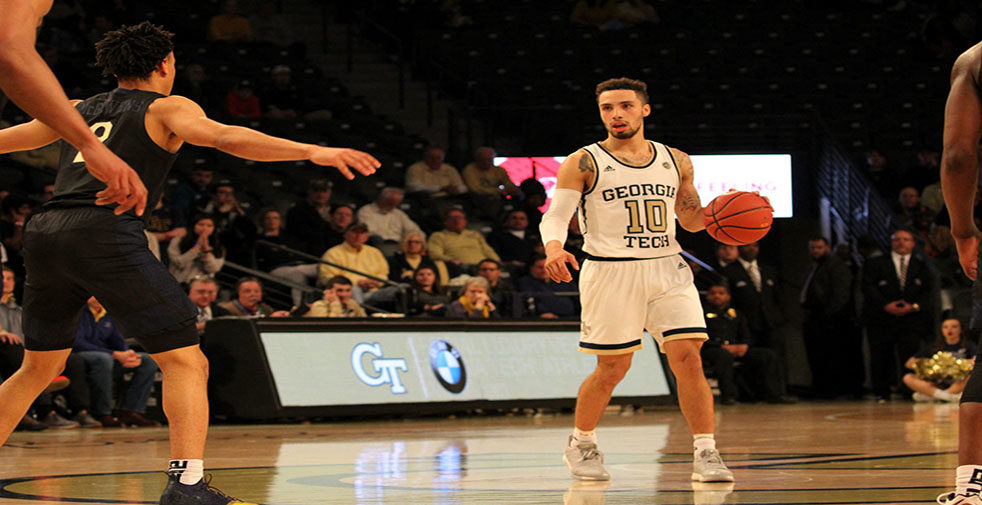The NCAA Playing Rules Oversight Panel recently approved five proposals that had been submitted to the committee in early May, the most notable of which is the expansion of the 3-point line to the International Basketball Federation’s (FIBA) standard of 22 feet, 1¾ inches.
The current NCAA 3-point line stands at 20 feet, 9 inches, making the 16¾ inch push backwards a 6.80% increase in distance—a change that had already been implemented in the 2018 and 2019 National Invitational Tournaments (NIT). This adjustment, along with the other landmark proposal of a shot clock reset to 20 seconds after an offensive rebound (down from the full 30 seconds), was implemented in an attempt to see an increase in both offensive spacing and pace of play as the NCAA aims to keep the game contemporary and exciting.
Outside of the Orlando Magic teams between 2008 and 2011 that were extreme outliers for their era, three-pointers in the NBA had been objectively undervalued until the recent “three point revolution” that began in the 2016-2017 season. It was in the year of Curry and the 73-9 Warrior that the median attempt rate broke the 30% threshold for the first time—spearheaded by the Houston Rockets’ previously unheard of 46.2% attempts by volume—and the tides of analytics-based offense make it difficult to envision a future where things will ever go back to the
way they were.
A 3-point shot is worth more than a 2-point shot (and the first rule of that tautology club is the first rule of the tautology club) despite the fact that it’s not fifty percent harder to make, so the average points per shot attempt (PPS) has always been higher for 3-pointers. Curiously enough, the 2016 season was the first time that the average PPS for 2-pointers went above 1, an upwards trend that has continued to present day as data-driven shot selection becomes more emphasized around the league. Coaches prevent their players from taking “bad” shots that headlined the late 1990s and early 2000s hero-ball era of post backups and contested deep two and fadeaways. Since the average 3-point percentage has remained constant throughout the past two decades, higher-value shots being converted at a higher rate has led to a scoring surge in the NBA unheard of for years and years prior.
Per historical data, NCAA teams have always shot 3-pointers at a significantly higher clip than their NBA counterparts over the past 20 years; the NCAA median percentage of shots taken from deep in the 1997 season stood over double that of the NBA (29.9 vs. 14.2), and despite upward trends in both leagues over the years, the gap still remains between the two leagues as of the most recent season (38.4 vs. 34.8, respectively). For reference, the 1997 NBA season was when the NBA reverted its shortened 3 point line back to what’s now the standard distance of 22 feet in the corners and 23 feet, 9 inches at the top of the key. Part of this feels intuitive – the NBA line has always been further back than the NCAA’s, shots further away from the basket are theoretically harder than shots closer to the basket, therefore there should always be a higher rate of attempts.
The NCAA 3-point line had been even closer to the basket prior to the 2008 season, where it was moved back from 19 feet and 9 inches to the current 20 feet and 9 inches. This change predictably created a dip in attempt percentage, though the difference was marginal within 1.5 percentage points and only lasted until the 2015 season. Leaving more space in the lane will open up the game more for the more drive-oriented players to operate, allow for NBA scouts to get a better assessment of how shooters will perform when moved back to the NBA 3-point line, and the further average rebound distance will go up as the longer shot attempts will lead to more erratic bounces on
missed shots.
And yet, all this has been seen before. The 2008 NCAA season may have temporarily stemmed the tide of 3-point shooting, but until the change is drastic enough to seriously devalue the 3-pointer compared to the 2-pointer, analytics will push for more and more shooting in both leagues. Outside of the rim-running Clint Capelas and Rudy Goberts of the world that can convert 2-pointers at a rate greater than 66%, the incentive to take 2-pointers is generally nonexistent outside of scenarios that make the percentage trend to the point of being worth greater than 1.2 PPS (e.g. uncontested shots, dunks, open-lane layups). The more interesting change will be the new OREB clock reset that models itself more in the style of the NBA’s clock reset rules.
Rate of play has always been a sticking point for the NCAA’s appeal. Collegiate athletes cannot hope to keep the same pace as professionals, but by putting a system in place that forces teams to be more aggressive when attacking off of rebounds, the NCAA acknowledges the need to keep the game active and will hopefully offset the loss in
scoring volume from the moved 3-point line.
